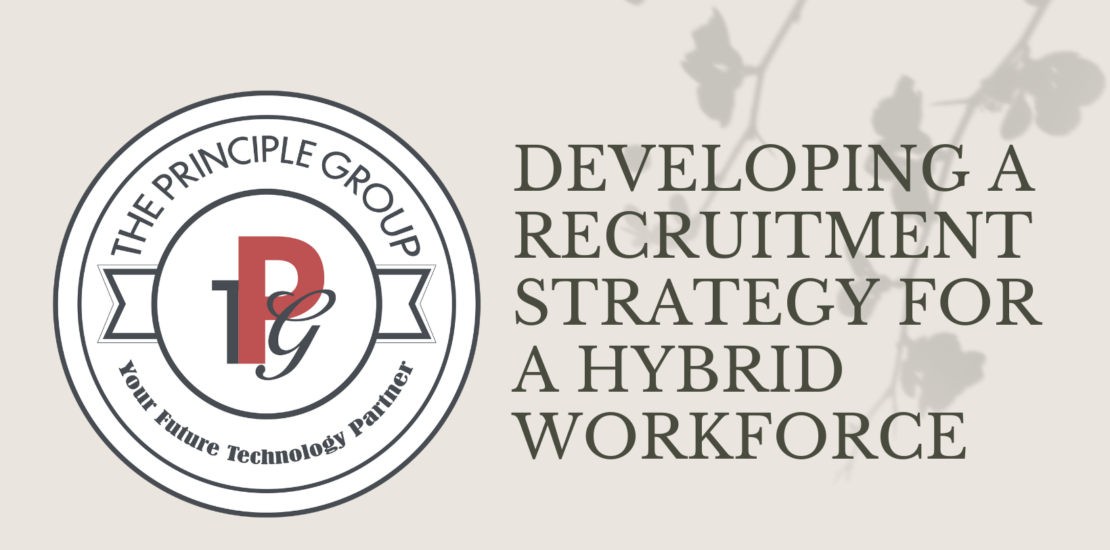- February 21, 2022
- Posted by: principlegroup
- Category: Uncategorized

As COVID-19 restrictions ease and vaccination rates rise, employees are asking when and how they will return to the office. As organizations explore the shift away from a fully remote work environment, they need to recognize that the pandemic had a permanent effect on how their employees want to work. Before 2020, remote work was considered a job perk. The pandemic demonstrated that remote work can be successful and is not just a passing trend. The Microsoft Work Trend Index revealed people want the flexibility to work from anywhere, but simultaneously crave more in-person connection. 86% of India’s workforce believe that a hybrid work model positively impacts work-life balance.
What is a hybrid work model?
A hybrid work model blends remote work with in-office work. A hybrid workforce means a company combines the benefits of remote work with the collaboration opportunities of in-person work in a physical location.
The hybrid workplace approach looks different among organizations. One approach is to place each employee into one of two categories— 100% remote or 100% in-office. Conversely, the opposite approach is to offer workers a very flexible hybrid policy where all employees are remote part of the time and in the office part of the time. Employees can decide what their balance of in-office versus remote work is and which days and times work best for them to come to the office. The approach many companies will end up adopting will fall somewhere between these two extremes. India’s flexible office spaces are estimated to expand 10-15% year-on-year during the next three years.
What are the benefits of a hybrid work model?
A majority of Indian professionals (72%) think that a fully remote work environment could negatively affect their career growth while 93% agree that working from home during the pandemic positively impacted their physical health. A hybrid work model provides the best of both worlds by offering the following benefits:
- Higher retention rates: A hybrid work model offers employees many benefits such as an improved work/life balance, flexibility in child care, more time for daily exercise, and cost savings. This results in happier employees that are more loyal and productive, and less stressed. This all combines to create higher retention rates.
- Increased productivity: In a hybrid workplace, workers are afforded the flexibility to utilize their time more efficiently. They can choose to work when they feel most productive, work during what used to be their commute time, and focus on tasks without typical office noise and distractions.
- Improved safety: Fewer employees in the office results in less risk of sickness. In a hybrid work model, a worker can work from home if they, or a member of their family, is contagious or at risk of spreading germs to coworkers.
How will the hybrid work model affect the hiring process?
- Recruiting for in-person jobs will become more challenging : The influx of workers into hybrid corporate positions will put a strain on service, manufacturing, and logistics jobs that rely solely on in-person employees. The flexibility offered by a hybrid model will bring non-traditional workers into what was the pre-pandemic corporate environment.
- Tougher competition for top talent: Recruiters need to remember that what was previously the local talent pool no longer belongs to just your local competitors. The candidates in your geographic area are looking at potential employers all over the country and employers throughout the country are trying to recruit the candidates in your local area to work remotely. You need to do more with your employer brand to stand out and attract talent.
What can you do to stand out and attract talent for a hybrid workplace environment?
- Model what you seek: Recruiters and hiring managers must be clear about what a hybrid work model looks like at their organization. The best way to demonstrate this is through virtual recruiting— including hiring events and interviews— to show candidates how your organization is adapting to the rising need to be flexible and accommodating.
- Use technology platforms to facilitate the recruiting and onboarding processes: The pandemic created an urgent need to adopt virtual recruitment and onboarding processes. Applicant tracking and assessment tools— along with recruiting, video conference, project management, and collaboration software— will continue to be significant platforms in hybrid work environments. Look at your recruitment processes and determine areas that can be improved and streamlined using technology.
- Leverage your employer brand to attract talent: Employer brand plays a role in recruiting a hybrid workforce. Potential candidates will search the internet and social media platforms to get a read on your company culture. Use your website and social media to provide an insider view, or day-in-the-life, of your company to build a connection with candidates and showcase your values.
- Communicate often: Recruit like a human. Put yourself in the candidate’s shoes throughout the entire process. It’s important to communicate often with a candidate to build a relationship and provide a clear understanding of what a hybrid workforce looks like within your organization. This helps to ensure the candidate’s and organization’s expectations align
- Foster connections: An immersive virtual experience is crucial when onboarding. New employees in a remote or hybrid work situation will feel a disconnect. It’s going to be more difficult for them to bond with other workers, absorb company culture, and learn their role when they are not in the office. Send a care package to new employees, set up virtual meetings to introduce them to coworkers, and check in often.
In the ever-changing world of work, it’s about time that recruiters and employers get on board with this new trend. The future will be Hybrid!
